MWC 2008
All of Nokia's new phones announced this week feature the latest version of the S60 smartphone platform: "3rd Edition Feature Pack 2", or some in the industry would call it "S60 3.2" for short. In fact, a Nokia marketing executive admitted to us that the naming is cumbersome and they may switch to something simpler with the next major version.
Version 3.2 adds animated visual cues throughout the OS, such as a subtle zoom-in as an application opens - much like Vindows Vista - or a diagonal fade/wipe effect, depending on the phone and theme selected. Check out our 6220 (and N78) videos to see these in action.
Other improvements include unified SMS and MMS messaging. The center-select key can also function as a kind of third soft key in some areas now (much like Nokia's Series 40 phones) and the platform now has fully integrated support for widgets (web applications that can run locally on your phone and act like Java applications, etc.)
Switching between applications and multi-tasking has also been improved. Since that's a major feature that sets S60 apart from non-smartphones, they've made the app switcher much more prominent.
As you can see from the screen shots above, there's now a "Show open apps" option at the top of the "Options" menu in all applications. The default option (like "Send" when writing a message) is still the default selection, but now you can press the "up" key to access the app switcher, making it much more discoverable. Previously, you had to know the secret shortcut of holding down the menu key (or home key on the E series) to access this menu.
They've also added a little S60 icon to both the menu shortcut and the app switcher itself. This is a little bit of branding similar to the Windows logo next to "Start" on Windows Mobile. It's a very smart move for S60 if they want to be known as something other than "that Nokia smartphone software", which they do.
Nokia has also developed some new home-screen plug-ins for its Ovi content portal service. In the example pictured, you can see a tally of how many photos you've uploaded directly from the phone to Flickr, and how many comments you've received on those photos.
The 6210 and 6220 both look very similar in terms of styling. In fact, they look a bit like twins, with one being a slider and the other simply being a bar-style version. However, they actually differ in a few major ways under the hood. The 6210 has a navigation focus, while the 620 is more camera-oriented.
Let's start with the 6220 Classic:
The 6220 has a serious 5 megapixel auto-focus camera built into it. In fact, it has all of the advanced camera capabilities of the N82, which was Nokia's absolute flagship camera phone until this week. Just a few months after rolling out the N82, the same camera capabilities are available now in a "mainstream" phone. The similarity to the N82 runs deeper, though; the 6220 matches the N82 pretty much feature-for-feature except for Wi-Fi. If you liked the N82 but don't need Wi-Fi and/or didn't care for the odd narrow keys on the N82, then the 6220 is worth a look.
Here is a short video of the 6220:
Even though the 6210 is a "Navigator" phone and the 6220 is not, the 6220 still has GPS and a large shortcut key (on the left side) with a large blue plastic "navigator" icon, just like the 6210.
Moving on to the 6210 Navigator, the emphasis is obviously on navigation and maps.
The 6210 runs Nokia Maps 2.0, which you'll find on of the new phones this week. Maps 2.0 supports improved graphics, with 3D and satellite view options, plus options to re-route around traffic and tolls.
It also has an all-new pedestrian mode. This is something common on phones in Japan, but brand new for the Western world. It's a very different kind of navigation, and the implementation in Nokia Maps seems like decent one.
What sets the 6210 apart is the inclusion of a digital compass linked to the Maps software so that the maps automatically rotate to match the direction you are facing at that moment. Combine that with 3D and/or satellite mode, and you can really get a clear picture of where you're going - literally! It's impressive stuff. It even shows landmarks on the map, so you can see what kind of things you should be looking for as you walk down the street. Little white dots on the path show where you've been, like virtual bread crumbs. You'd have to try really, really hard to get lost with a phone like this.


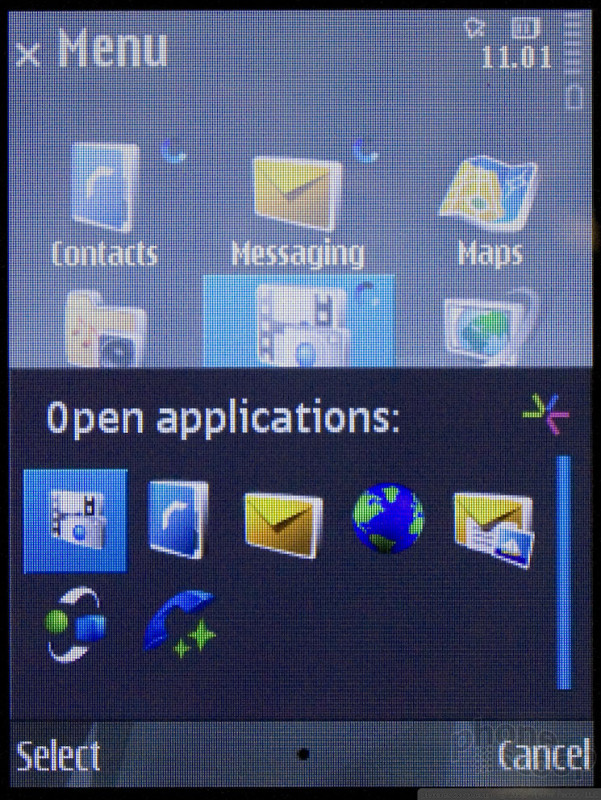














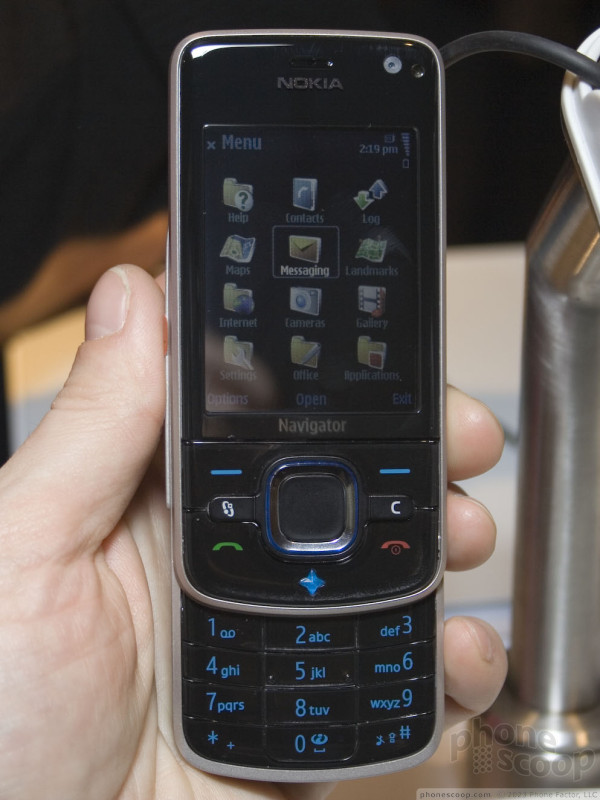




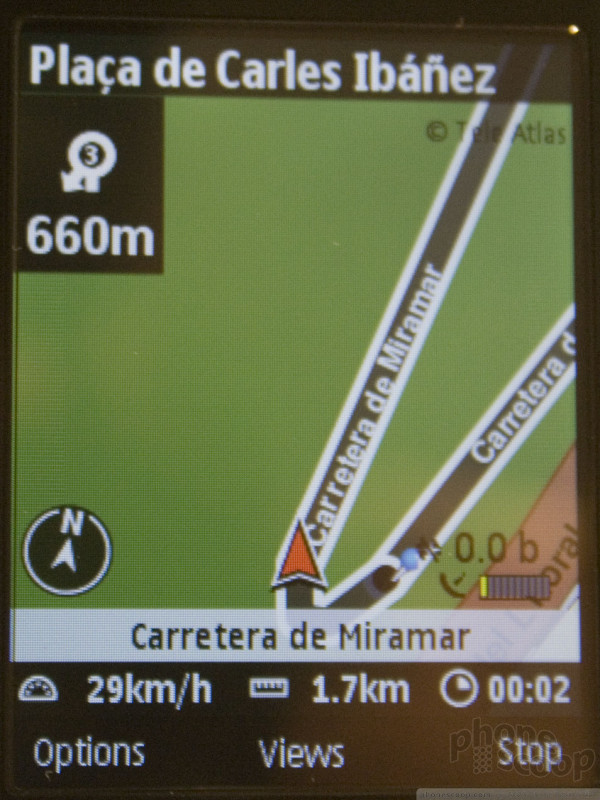





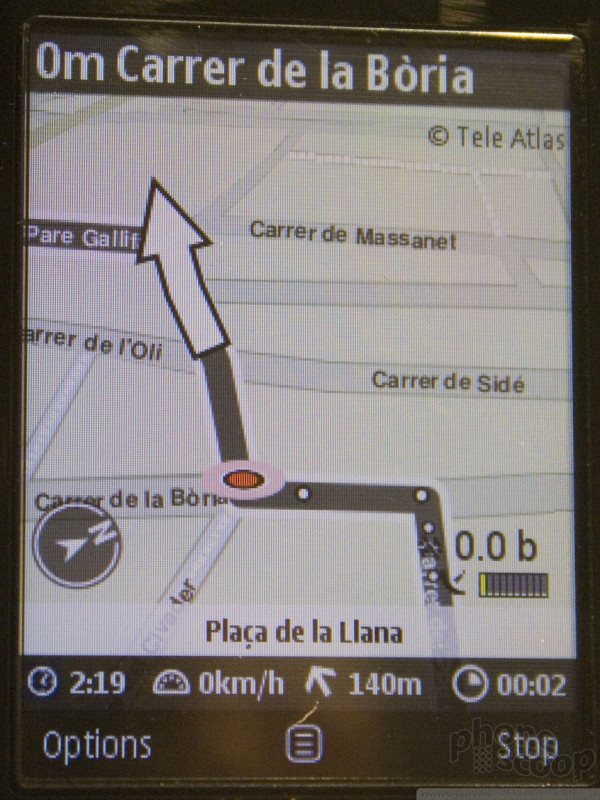




 CTIA 2008
CTIA 2008
 Samsung S24 Series Adds More AI, Updates the Hardware
Samsung S24 Series Adds More AI, Updates the Hardware
 Galaxy Ring Joins Samsung's New Wearable Lineup
Galaxy Ring Joins Samsung's New Wearable Lineup
 Hands On with the HMD Fusion and its Smart Outfits
Hands On with the HMD Fusion and its Smart Outfits
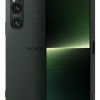 Sony Updates Flagship Phone With New Camera
Sony Updates Flagship Phone With New Camera
 Nokia 6210 Navigator
Nokia 6210 Navigator
 Nokia 6220 Classic
Nokia 6220 Classic
 Nokia N96
Nokia N96







